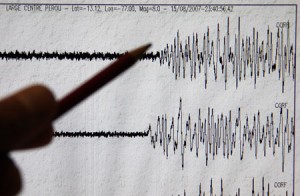Disasters can occur anytime, anywhere. It is essential that you know what to do in case disaster strikes. This article provides a summary of the natural disasters that are most likely to occur in Canada and how to ensure personal safety in case of these disasters occur.
1. Floods
Communities along major lakes, rivers and its tributaries are most commonly affected by floods. Water level rises causing it to overflow into residential communities. Floods are caused by sudden thawing of snow, heavy

rainfall, ice break-ups or ice jams.
What To Do?
If you are AT HOME,
- If possible, turn off the gas lines and power supply.
- Move your valuables on the higher part or upper levels of your home.
- Stay in the upper levels of your house, unless local authorities recommend evacuation.
If you are AWAY FROM HOME,
- Avoid flooded areas and move to elevated areas.
- Do not attempt to walk across a flooded road, especially if there is strong water current.
- Stay in a visible and safe area where rescuers can have easy access.
If you are IN THE CAR,
- Do not attempt to cross flooded areas, especially if your vehicle is lightweight and has low chasses.
- Park your vehicle in an elevated area.
- Turn your car engine off, stay out of the car and wait for rescuers or for the water to subside.
2. Earthquakes
Earthquakes are the sudden movement or tremors of the ground due to seismic activity in the earth’s crust. Unlike other weather phenomena that can be tracked and forecasted, earthquakes occur suddenly, giving you not time to prepare or react. Although not all tremors are destructive, an earthquake that registers more than 7 on the Richter Scale can cause large-scale damage.

What To Do?
If you are AT HOME,
- Duck and cover your head with your hand or a pillow.
- Seek shelter beneath a sturdy desk or table, firmly hold onto the furniture piece and move along with it.
- If there are no furniture nearby, rest your back against the wall and cover your head.
- Remain in the area where you found shelter while waiting for the tremors to subside.
- Expect aftershocks.
If you are AWAY FROM HOME,
- Stay away from trees, building, power or telephone lines, and other structures that could collapse.
- If you are in an open field, drop to the ground and remain in place until tremors stop.
If you are IN THE CAR,
- Carefully pull off the road and park in a safe place – away from overpasses, bridges, buildings and other structures that could collapse.
- Turn the car engine off but turn on your emergency flashers.
- Stay inside the car and fasten your seatbelt. Wait for the tremors to stop.
3. Lightning Storms
Lightning storm or lightning bolts occur in most regions of Canada. These natural disasters consist of continuous lightning flashes and thunder that can last for several minutes or hours. Lightning storms can ignite a fire, smash windows, or cause power outages or explosions if they strike combustible substances such as fuel. It can be cause fatal burns or electrocution if a person is directly or indirectly hit.
What To Do?
If you are AT HOME,
- Stay inside your house.
- Stay away from metal objects, electrical equipment, windows and walls.
- Unplug electrical equipment or appliances.
If you are AWAY FROM HOME,
- Stay away from natural lightning rods such as a tall tree in an open field.
- Avoid open areas, beach or hilltops.
- If you are in an open field, drop to the ground and keep your head low.
- Seek shelter inside a sturdy building and never under a tree.
- Avoid contact with metals – farm equipment, tractors, motorcycles, and bicycles.
- Stay away from telephone or power lines.
If you are IN THE CAR,
- Carefully pull off the road and park in a safe place – away from telephone or power lines and tall trees.
- Turn the car engine off but turn on your emergency flashers.
- Stay inside the car until the storm stops.
- Avoid contact with metal parts of the vehicle.
4. Tornadoes
Among the natural disasters that occur in the country, tornadoes are probably the most destructive. These funnel-shaped whirlwinds pack very strong winds that can destroy virtually anything in their path. They can tear down houses, uproot trees and turn cars over.
What To Do?
If you are AT HOME,
- Keep off the doors and windows.
- Go to the basement or seek shelter under a sturdy furniture, staircase or in a closet.
- Avoid rooms that are along the path of the tornado or large rooms that could collapse.
If you are AWAY FROM HOME,
- Find a nearby building where you can stay.
- If there are no buildings, drop to ground or in a hollow or ditch.
- Cover your head.
If you are IN THE CAR,
- Park the car and turn the engine off.
- Get out of your vehicle and seek a building for shelter.
In all of these disasters, it is very important that you stay calm and avoid using or contact with corded phones or devices, including those that are recharging.
Knowing what to do in case of disasters can help prevent injuries. St Mark James Training offers basic disaster preparedness training courses for communities and individuals. Everyone is encouraged to share in the task of ensuring safety during disasters.
Additional Disaster Preparation Video / Information
http://www.youtube.com/watch?v=DakUHZfOwG8
